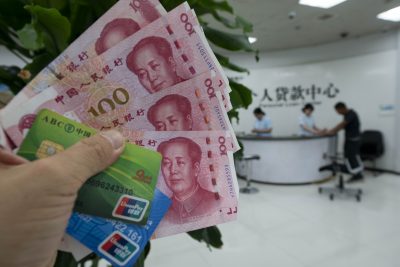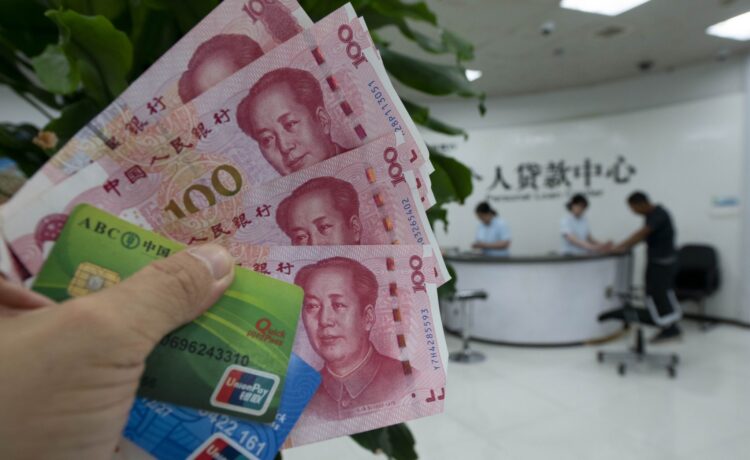Author: Ghulam Ali, Hong Kong Research Centre for Asian Studies
China’s pursuit of internationalising the yuan, currency swaps, e-currency, cross-border deals and digitalised currency have recently made international news. These efforts are mainly on the rise with Gulf states.

On 28 November 2023, the People’s Bank of China and the Central Bank of the United Arab Emirates renewed their currency swap agreement worth US$4.89 billion for five years. Both banks also signed a memorandum of understanding to enhance collaboration in digital currency development.
Meanwhile, the Dubai Financial Market, in collaboration with Nasdaq Dubai and the Shanghai Stock Exchange, signed a memorandum of understanding covering various areas of digital financial cooperation. China–UAE currency swap started in 2012, and in March 2023, the two sides made the first-ever purchase of liquified natural gas in yuan.
On 20 November 2023, the People’s Bank of China and the Saudi Arabian Monetary Authority signed a currency swap of US$6.98 billion for three years. In a separate development, Saudi companies were listed on the Hong Kong Stock Exchange. Saudi Arabia is in active talks with Beijing to price some of its oil sales in Chinese yuan, a move that would dent the US dollar’s dominance in the global petroleum market and mark another shift by the world’s top crude exporter towards Asia.
China also has a currency swap agreement with Qatar. In addition to currency swaps, China has signed cross-border trade settlement arrangements with all six members of the Gulf Cooperation Council and has established yuan clearing centres in different cities. These measures could make the yuan a trade invoicing currency, reduce cumbersome processes and costs and create a pool of liquidity in the yuan.
The growing financial cooperation between China and Gulf Cooperation Council states is not unexpected. It is the result of steady, systematic growth over a decade and confirms deepening bilateral relations. Both sides have placed a significant premium on the digitalisation of their finances. They are taking measures to create greater space and avoid US sanctions. The Gulf region, especially the United Arab Emirates, has positioned itself as a global financial hub and is drawing investments towards it. Saudi Arabia is also striving to catch up quickly.
From the Chinese side, the Belt and Road Initiative and its energy needs pushed it towards the Gulf Cooperation Council. The Belt and Road Initiative’s Action Plan stresses financial connectivity, the internationalisation of the yuan, cross-border payment agreements, financial integration and the incorporation of the yuan in the International Monetary Fund’s Special Drawing Rights basket of currencies. China achieved this milestone in 2016.
In line with these goals, China launched the Yuan Cross-Border Interbank Payment System in 2015, providing a stable platform service for cross-border yuan settlement. By early 2023, this payment system boasts 1366 participants from 109 countries and regions. Additionally, the People’s Bank of China has entered into currency swap agreements with the central banks or monetary authorities of 29 countries.
China initiated efforts to internationalise the yuan in 2004 and started financial cooperation with the Gulf Cooperation Council a decade later. In 2013, during his meeting with the King of Bahrain, Sheikh Hamad bin Isa al-Khalifa, Chinese President Xi Jinping emphasised the need for closer cooperation with Gulf countries. Xi reiterated this during his speech at the Arab League headquarters in 2016. Acting upon Xi’s guidelines, Chinese banks and financial institutions expanded their presence, cross-border financial transactions and activities in the Gulf region.
As a result, Chinese banks have more than doubled their balance sheets in the Dubai International Financial Centre since mid-2014. By 2018, their total assets accounted for nearly a quarter of the financial centre’s assets. And Chinese financial entities have upgraded their licenses from subsidiary to branch status in the Dubai International Finance Centre.
Though these deals are moderate in volume, they demonstrate China’s growing ties with the region. Beijing has institutional mechanisms with the Gulf Cooperation Council and the Arab League. Saudi Arabia and the United Arab Emirates are set to join the China-and-Russia-led BRICS in early 2024. They are also dialogue partners of the Shanghai Cooperation Organisation, with the possibility of achieving full member status in the future.
These financial agreements between China and the Gulf Cooperation Council hold great potential. They could reduce the duration and cost of transactions, mitigate risks, enhance resilience against financial crises, expand market access, promote bilateral trade and facilitate regional integration. They may serve as catalysts, encouraging other Middle Eastern countries to engage in similar deals with China.
Saudi Arabia — as one of the primary oil exporters to China — may consider adopting the yuan for oil trade in the long term, reducing dependence on the dollar. These deals will strengthen bilateral relations and indicate a shift from the petrodollar to the ‘petroyuan’, albeit over an extended timeframe.
Dr Ghulam Ali is Deputy Director at The Hong Kong Research Centre for Asian Studies.

















